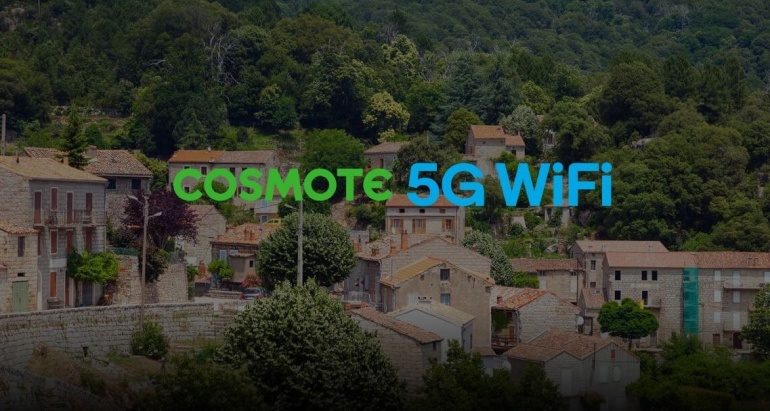Greece’s OTE Group is turning to 5G fixed wireless access (FWA) as a reinforcement for its broadband business in less populated areas, following a recent step-back on fixed revenue and rise in churn to new challengers, such as Elon Musk’s Starlink.
Greece’s OTE Group is turning to 5G fixed wireless access (FWA) as a reinforcement for its broadband business in less populated areas, following a recent step-back on fixed revenue and rise in churn to new challengers, such as Elon Musk’s Starlink.
The Cosmote 5G WiFi offering — debuted in late-January, using the 5G standalone (SA) core OTE introduced in June last year — will “improve connectivity in fibre-under-served areas, minimising customer losses to alternative infrastructures like satellite or FMS [fixed-mobile substitution]”, said Chief Executive Kostas Nebis on the operator’s annual results call, held today.
Nebis conceded that OTE has been losing “some customers” that are restricted by a substandard copper connection and/or no fibre availability, “especially in the summer months” — and confirmed Starlink was one of the alternative providers that were cashing in.
He estimated that the US satco had secured only about 30,000 users in Greece since launching in the country during early-2023, but was “for sure… eating up part of the potential broadband base”, particularly in property developments targeted at holidaymakers and second homeowners.
Nonetheless, Nebis said OTE had “high expectations” for the new FWA service as a retention and acquisition tool, saying it will act as a “bridge” to higher-speed connections and help it “manage better these customers until fibre is rolled out in their territory”.
As it develops, it may also enable OTE to more deeply tap into the Greek government’s Gigabit Voucher scheme, which went live in late-2024 and is distributing ‘connectivity vouchers’ of up to €200 to users signing up to 24-month contracts on faster broadband services, whether wired or wireless.
Cosmote 5G WiFi’s 5G SA foundation will enable it to offer “stable performance for a large number of users, and low latency”, said OTE. Its results documentation confirmed the service is based on network slicing, but did not go into more detail on its architecture or resource allocation (including whether it borrows any ideas from sister business T-Mobile US’
A quick fix for fixed The FWA service is one way OTE’s management is seeking to regain growth in its retail fixed business in the current year, to 31 December 2025 (FY25), following drops in revenue in FY23 (-2%) and FY24 (-0.4%).
FY24 also saw the operator report a 0.1%-fall in its Greek broadband subscriber number, to 2.35 million. The year’s sales decrease was part-fed by lapping of a late-2023 discount scheme related to e-billing, but OTE also cited “challenging trends in legacy services” as a factor.
As well as the FWA deployment, the operator hopes to drive the return to growth through wider fibre-to-the-home (FTTH) buildout and uptake, and adoption of both the Gigabit Voucher scheme and parallel Smart Readiness programme, which offers subsidies for in-building connections. OTE also debuted a higher-end 3Gbps fibre offering in January, to boost higher-end user spend, hopes to gain extra impetus in the wholesale space on the back of recent access deals with rivals Vodafone and Nova.
Other infra threats emerge, too Operationally, the FWA rollout will also give OTE’s fixed broadband business greater reach on higher-speed services, following some sluggishness in its FTTH build and rising competition.
The operator — which continues to work towards a headline target of achieving three million homes passed by 2027, as part of a flagship €3bn investment programme unveiled in late-2021 — reached 1.7 million by the end of 2024, in line with a revised target.
However, it is facing a new layer of FTTH build competition from PPC FiberGrid, a dedicated subsidiary of state utility PPC (targeting 1.7 million premises by December 2025, and three million by the end of 2026); and United Fiber, subsidiary of Nova owner United Group. It recently secured a €95m loan from Eurobank and the National Bank of Greece to fuel expansion of its next-gen wireline infra, which covered 540,000 Greek homes and businesses at end-2024, and is aiming to increase this to 830,000 by the end of this year.
OTE’s main infrastructure expansion goals for 2025 are to expand FTTH reach to “approximately” 2.1 million homes and businesses and deliver wider 5G SA coverage. This implied add-on of about 400,000 premises passed would be fairly consistent with FTTH build outcomes in 2024 (~369,000) and 2023 (420,000).

